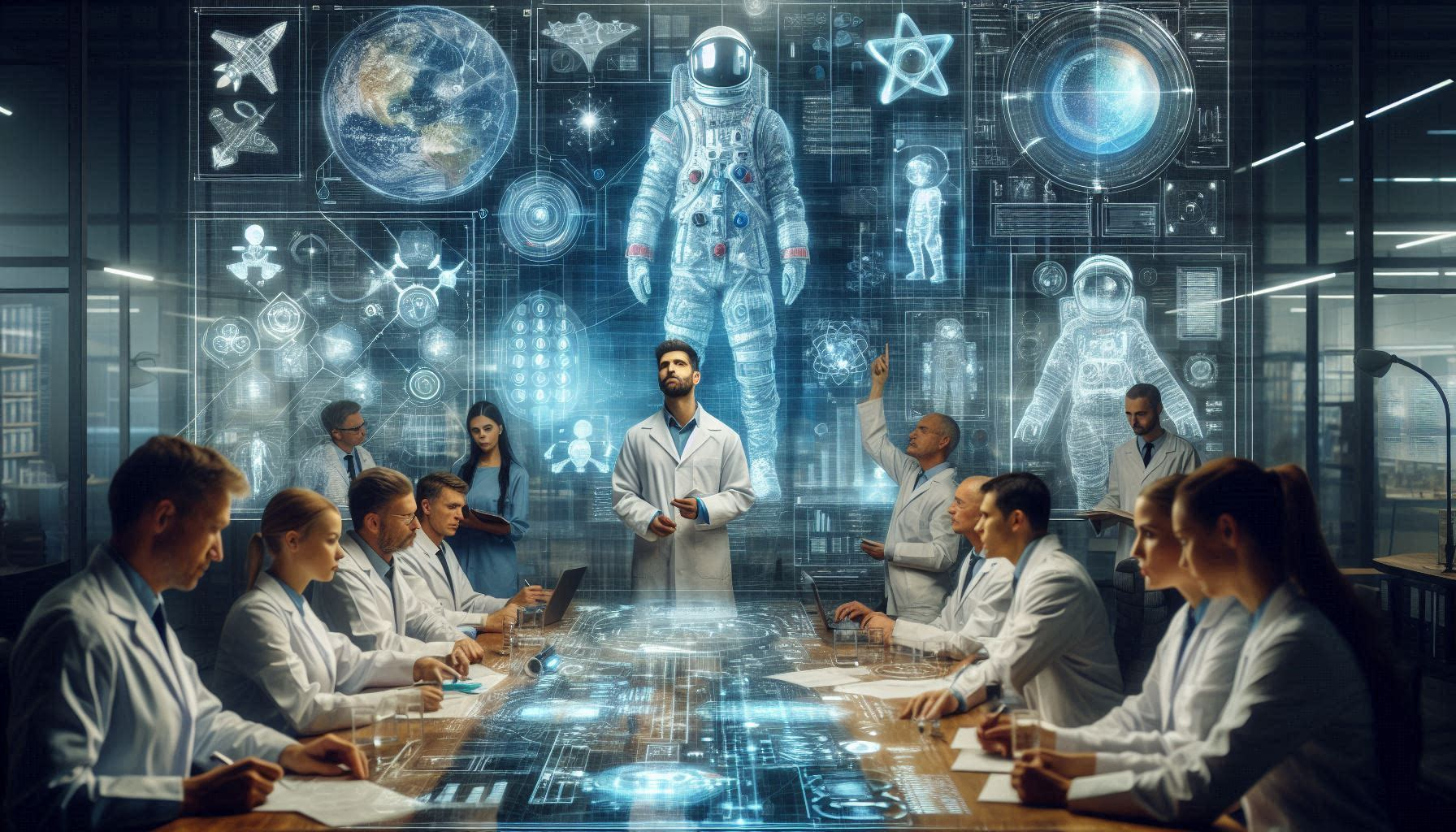Space Exploration Project Documentation
 kasinadhsarma
kasinadhsarma
Project Objective
Develop a comprehensive, cost-effective space travel system that enables human exploration and colonization of the Moon and Mars, focusing on advanced propulsion systems, life support, landing algorithms, structural optimization, cost management, human factors, navigation, radiation protection, and data analysis using AI and advanced scientific principles.
Project Goals
Achieve cost-effective and safe human space travel to the Moon and Mars
Ensure long-term sustainability and survivability in space
Utilize advanced technologies and AI to optimize all aspects of space missions
1. Propulsion System Development
Research findings on ion propulsion have shown promising results for long-duration space missions. NASA's Dawn mission successfully demonstrated the use of ion propulsion for interplanetary travel. The technology offers high specific impulse and fuel efficiency, making it ideal for deep space exploration. Key considerations include:
Xenon gas as a common propellant
Solar electric power systems for energy generation
Scalability for larger spacecraft
The Tsiolkovsky rocket equation remains fundamental in propulsion system design:
Δv = v_e * ln(m_0 / m_f)
Where:
Δv is the change in velocity
v_e is the effective exhaust velocity
m_0 is the initial total mass
m_f is the final total mass
2. Life Support Systems
NASA's Environmental Control and Life Support Systems (ECLSS) provide a foundation for sustainable life support in space. Key findings include:
Water recycling systems on the ISS achieve up to 93% efficiency
NASA's Ohalo III space crop production system demonstrates potential for in-space food production
Hydroponics and aeroponics show promise for efficient plant growth in microgravity
Microbial nutrient production offers a potential solution for long-duration missions
Future developments should focus on increasing system efficiency, reducing mass, and improving reliability for long-duration missions to Mars.
3. Lunar and Mars Landing Algorithms
NASA's Safe and Precise Landing – Integrated Capabilities Evolution (SPLICE) program is advancing precision landing technologies. Key developments include:
Terrain Relative Navigation (TRN) for accurate positioning
Hazard Detection and Avoidance (HDA) systems
Velocity Sensing and Altimetry
These technologies aim to enable pinpoint landings on diverse planetary surfaces, crucial for establishing sustainable bases on the Moon and Mars.
4. Spacecraft Structural Design Optimization
Finite Element Analysis (FEA) is a crucial tool in optimizing spacecraft structures. Research findings highlight:
Advanced materials like Carbon foams for lightweight, strong structures
Mylar for thermal insulation and micrometeoroid protection
Topology optimization techniques for weight reduction while maintaining structural integrity
Future research should focus on integrating these techniques with additive manufacturing for rapid prototyping and production of optimized spacecraft components.
5. Cost Estimation and Reduction
NASA's cost estimation practices provide valuable insights for project management. Key findings include:
Parametric cost models for early-stage estimation
Machine learning applications in cost prediction and risk assessment
Importance of historical data analysis for accurate estimations
Cost reduction strategies should focus on:
Reusable launch systems
In-situ resource utilization (ISRU) on the Moon and Mars
Standardization of spacecraft components
6. Simulation of Human Factors in Space
Analog studies and spaceflight health risk assessments are crucial for understanding human factors in space. Key findings from NASA's Flight Analogs research include:
Psychological effects of long-duration isolation
Physiological changes in microgravity environments
Countermeasures for bone and muscle loss
Future research should focus on developing more accurate simulations of the space environment and improving countermeasures for long-duration missions.
7. Interplanetary Navigation System
AI-based interplanetary navigation systems show promise for autonomous spacecraft guidance. Research from the AI Accelerator Institute and ESA highlights:
Machine learning algorithms for trajectory optimization
Autonomous decision-making for course corrections
Integration with onboard sensors for real-time navigation updates
Future development should focus on improving the reliability and efficiency of these systems for long-duration missions beyond Mars.
8. Radiation Protection and Monitoring
Space radiation poses significant risks to human health during long-duration missions. NASA's research efforts have focused on:
Characterizing the space radiation environment
Developing advanced shielding materials
Creating accurate models for predicting radiation exposure
Future research should prioritize:
Active shielding technologies using electromagnetic fields
Biomedical countermeasures to mitigate radiation effects
Real-time personal dosimetry for astronauts
9. Data Collection and Analysis Platform
NASA's Multi-Mission Algorithm and Analysis Platform (MAAP) demonstrates the potential of advanced data processing and analysis systems. Key features include:
Cloud-based architecture for scalable computing
Integration of diverse datasets from multiple missions
Advanced visualization tools for data interpretation
Future development should focus on:
Implementing AI and machine learning for automated data analysis
Improving real-time data processing capabilities for in-situ decision making
Enhancing data sharing and collaboration tools for international space missions
10. AI for Autonomous Operations
NASA's AI Inventory provides insights into various applications of AI in space exploration. Relevant use cases include:
Autonomous Marine Vehicles for testing technologies applicable to space exploration
CLASP Coverage Planning & Scheduling for optimizing mission planning
High-Performance Quantum-Classical Hybrid Deep Generative Modeling for complex data analysis
Mexec Onboard Planning and Execution for autonomous spacecraft operations
SensorWeb for coordinating multiple observation platforms
Future research should focus on:
Improving the robustness and reliability of AI systems for critical space operations
Developing AI-driven decision-making systems for emergency scenarios
Integrating AI across all aspects of space missions for optimized performance and resource utilization
This comprehensive documentation provides a foundation for the development of a cost-effective and sustainable space travel system for human exploration and colonization of the Moon and Mars. By leveraging advanced technologies and AI across all aspects of the mission, we can overcome the challenges of long-duration space travel and establish a permanent human presence beyond Earth.
Subscribe to my newsletter
Read articles from kasinadhsarma directly inside your inbox. Subscribe to the newsletter, and don't miss out.
Written by

kasinadhsarma
kasinadhsarma
Hi I am Kasinadhsarma